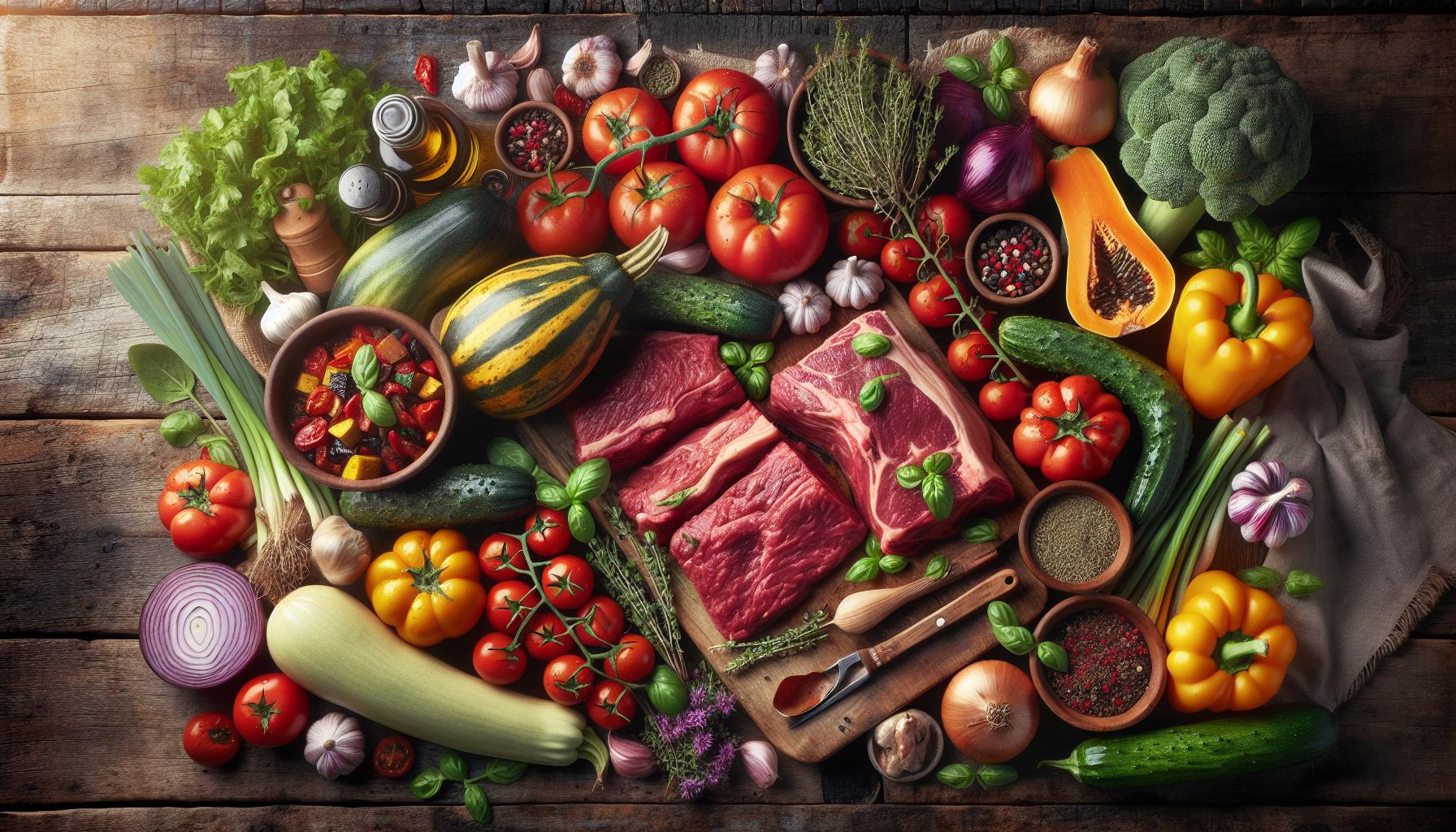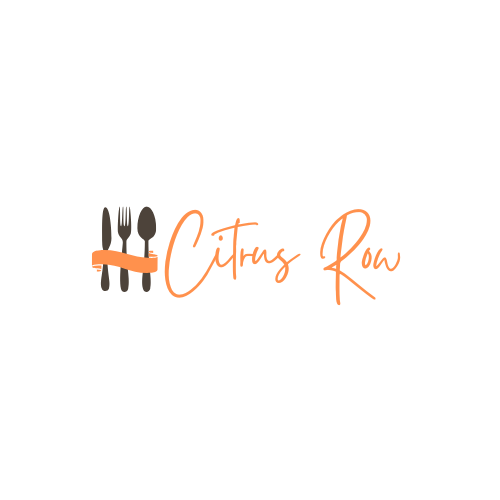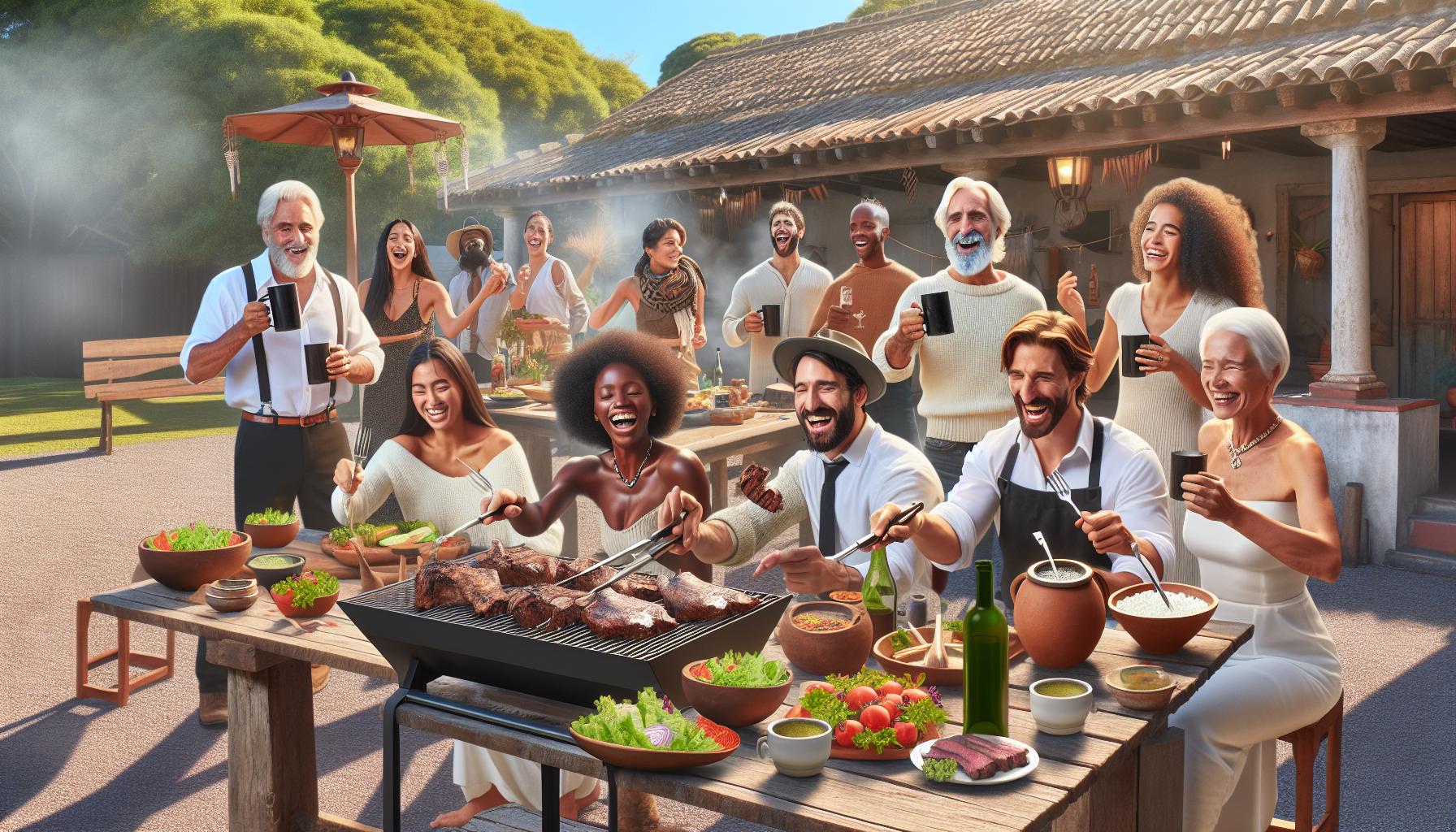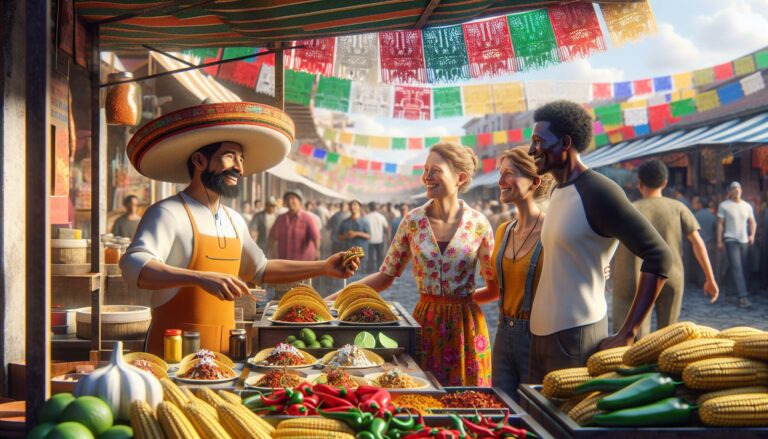Argentine cuisine tells a delicious story of cultural fusion where European influences dance with indigenous traditions. From the sizzling parrillas filled with premium cuts of beef to the sweet embrace of dulce de leche, Argentina’s food scene captivates food lovers worldwide.
The heart of Argentine food culture beats strongest during mealtime gatherings where families and friends come together. It’s a social celebration where time stands still and conversation flows as freely as the Malbec wine. Whether it’s a Sunday asado (barbecue) or sharing mate (traditional tea) in the afternoon these cherished rituals have shaped Argentina’s identity for generations.
The Rich History of Argentine Cuisine
Argentine cuisine emerged from a fusion of diverse cultural influences spanning four centuries. The culinary traditions reflect a harmonious blend of European techniques with indigenous ingredients.
European and Indigenous Influences
Argentina’s gastronomy transformed in the 16th century when Spanish colonizers introduced cattle, wheat flour, citrus fruits, wine grapes, almonds, cinnamon, sugar cane, salt, and olive oil to South America. The indigenous Quechua and Guarani people contributed essential ingredients like corn, squash, potatoes, sweet potatoes, tomatoes, and chili peppers to the evolving cuisine. Italian immigrants in the late 19th century brought pasta-making techniques, pizza recipes, and gelato traditions. Spanish settlers established the foundation for empanada preparation while German immigrants introduced beer brewing methods and sausage-making techniques.
The Gaucho Legacy
The gaucho culture shaped Argentina’s culinary identity through their distinctive cooking methods and meat-centric dishes. These skilled horsemen developed asado, a traditional barbecue technique that involves slow-cooking meat over wood coals. Gauchos created chimichurri sauce, combining parsley, garlic, olive oil, vinegar, red pepper flakes to enhance grilled meats. Their practice of drinking mate tea from a hollow gourd with a metal straw (bombilla) remains central to Argentine social customs. Gaucho influence extends to traditional dishes like locro, a hearty stew made with corn, beans, meat that originated in the Pampas region.
Essential Ingredients in Argentine Cooking

Argentine cuisine relies on high-quality ingredients that reflect the country’s diverse landscapes and cultural heritage. The combination of premium meats local produce creates distinctive flavors that characterize traditional Argentine dishes.
Beef and Meat Culture
Argentine beef stands as the cornerstone of the country’s culinary identity. Premium cuts like bife de chorizo, ojo de bife asado come from grass-fed cattle raised in the vast Pampas region. These prized cuts contain higher levels of omega-3 fatty acids due to the grass-fed diet. Butcher shops called carnicerías offer 25 different cuts of beef, each suited for specific cooking methods. Local sausages including chorizo morcilla complement the meat selection, playing essential roles in traditional asado gatherings.
Local Produce and Herbs
Fresh ingredients from Argentina’s diverse regions enhance traditional recipes. Organic tomatoes potatoes corn from the fertile Pampas supply essential components for daily meals. Native herbs like oregano thyme sage grow abundantly in home gardens patios. Peperina, an indigenous mint variety, adds distinctive flavor to marinades sauces. Local markets feature seasonal vegetables including zapallo (squash) batata (sweet potato) acelga (Swiss chard). Fruit production thrives in different regions with Mendoza’s vineyards producing world-class wine grapes San Juan’s olive groves yielding premium oils.
Traditional Argentine Dishes
Argentine cuisine showcases a diverse array of dishes that reflect the country’s cultural heritage. These traditional recipes combine European cooking techniques with indigenous ingredients to create unique flavors.
Asado: The Art of Barbecue
Asado represents Argentina’s most celebrated culinary tradition, featuring premium cuts of beef grilled on a parrilla (metal grill). The preparation involves slow-cooking various meats over wood or charcoal embers, creating distinct smoky flavors. Expert asadores (grill masters) carefully monitor the cooking process, ensuring each cut reaches the perfect temperature. Traditional asado includes cuts like tira de asado (short ribs), vacío (flank steak) and bife de chorizo (sirloin steak), served with chimichurri sauce. The meal typically begins with achuras (offal) such as mollejas (sweetbreads) and chorizo (sausage), followed by larger cuts of meat.
Popular Street Foods
Argentina’s street food culture centers around portable savory pastries and quick bites. Empanadas lead the street food scene, featuring flaky pastry shells filled with beef, chicken, ham and cheese or corn. Choripán, a grilled chorizo sandwich served on crusty bread with chimichurri sauce, appears at street corners and football stadiums. Locals enjoy pizza by the slice, topped with abundant mozzarella cheese and classic ingredients. Food carts offer authentic milanesas, breaded meat cutlets served as sandwiches. Sweet treats include churros filled with dulce de leche and alfajores, shortbread cookies sandwiched with caramel filling.
Dining Customs and Etiquette
Argentine dining customs emphasize social connections through extended meals shared with family and friends. These customs reflect a blend of European influences and local traditions that shape daily eating practices.
Meal Times and Social Rituals
Argentinians structure their meals around a late-eating schedule that differs from North American patterns. Breakfast consists of café con leche with medialunas or toast, served between 7:00 AM and 9:00 AM. Lunch occurs from 12:30 PM to 2:00 PM, featuring light dishes like sandwiches or salads. The main meal, dinner, starts at 9:00 PM or later, often extending past midnight. Business lunches last 90 minutes minimum, while social gatherings extend several hours. Table manners follow European customs: keeping hands visible above the table, using utensils continental-style, passing bread counterclockwise. Arriving 30 minutes late to social dinners is customary and expected, though business meals require punctuality.
Mate Culture
The ritual of sharing mate tea exemplifies Argentine hospitality and social bonding. The cebador (mate server) prepares the gourd with yerba mate leaves, maintaining a consistent temperature with hot water from a thermos. Participants drink from the same metal straw (bombilla), passing the gourd counterclockwise in social gatherings. Each person drinks the entire serving before returning it to the cebador for refilling. Declining a mate offering is acceptable by saying “gracias” when returning the gourd. Traditional mate ceremonies occur during afternoon merienda (tea time) between 4:00 PM and 7:00 PM. Social groups share mate in parks, offices, universities or during family gatherings.
Regional Food Variations
Argentina’s diverse geography creates distinct culinary regions, each with unique ingredients and cooking methods reflecting local traditions and available resources.
Northern Argentine Cuisine
Northern Argentine cuisine features indigenous influences and hearty dishes adapted to the mountainous terrain. Locro, a thick corn-based stew, combines hominy with beef, chorizo, beans, squash, corn, and local spices. The region’s signature empanadas salteñas incorporate spiced meat, potatoes, and hard-boiled eggs in a flaky pastry. Tamales norteños wrap corn dough around meat fillings in corn husks, while humitas combine fresh corn paste with cheese, wrapped in corn leaves. Local specialties include quinoa-based dishes, llama meat preparations, and native Andean potatoes in various preparations.
Patagonian Specialties
Patagonian cuisine centers on lamb, wild game, and seafood from the cold Atlantic waters. Cordero patagónico presents whole lamb slow-roasted on iron crosses over open fires, creating a crispy exterior and tender meat. Fresh-caught trout, salmon, and king crab feature prominently in coastal dishes. Regional delicacies include wild boar, deer, and calafate berry desserts. Black hake, spider crab, and southern king crab appear in traditional stews and casseroles. Local mushrooms, particularly morels, enhance regional dishes during autumn months.
Wine and Beverage Traditions
Argentina’s beverage culture centers on world-class wines and traditional drinks that reflect its social customs and regional diversity. The country’s dedication to quality beverages extends from its renowned wineries to local cafes.
Malbec and Wine Culture
Argentina’s Mendoza region produces 70% of the country’s wines, with Malbec as its flagship varietal. The high-altitude vineyards, situated between 2,800 and 5,000 feet above sea level, create optimal growing conditions for grape cultivation. Argentine Malbec exhibits distinctive characteristics of plum, blackberry, and chocolate notes, earning recognition from international wine critics. Local wineries employ traditional European winemaking techniques combined with modern technology to create premium vintages. Wine tourism attracts 1.5 million visitors annually to Argentine wine regions, offering tastings, vineyard tours, and harvest experiences.
Traditional Drinks
Argentine beverage traditions include distinctive non-alcoholic options beyond wine. Mate serves as the national drink, consumed at a rate of 14 pounds per person annually. Fernet, an Italian amaro mixed with cola, emerged as a popular cocktail in Córdoba during the 1980s. Local craft beers gained prominence in urban areas, with 500+ microbreweries operating across the country. Submarino, hot milk with a chocolate bar melted inside, remains a cafe favorite during winter months. Fresh-squeezed orange juice appears at breakfast tables throughout the country, with Argentina producing 1 million tons of citrus fruits annually.
| Beverage Type | Annual Consumption/Production |
|---|---|
| Mate | 14 lbs per person |
| Wine | 8.4 million hectoliters |
| Citrus Juice | 1 million tons of fruit |
| Craft Beer | 500+ microbreweries |
Modern Argentine Food Scene
Argentina’s contemporary culinary landscape blends traditional flavors with innovative cooking techniques. The fusion of time-honored recipes and modern gastronomy creates unique dining experiences in urban centers like Buenos Aires, Mendoza and Córdoba.
Contemporary Food Trends
Farm-to-table restaurants showcase organic produce from local farmers across Argentina’s diverse regions. Top chefs incorporate molecular gastronomy techniques into traditional dishes, transforming classics like empanadas into deconstructed versions with unexpected textures. Plant-based alternatives gain popularity, with restaurants offering vegan versions of milanesas using seitan or legumes. Food halls in major cities feature artisanal food stalls serving creative takes on street food favorites. Social media influences dining choices, with Instagram-worthy presentations of traditional dishes attracting younger generations. Food delivery apps connect customers to both high-end restaurants and local gems, making diverse cuisine accessible. Sustainable practices emerge in restaurants, focusing on reducing food waste and using seasonal ingredients.
International Influences
Global culinary trends shape Argentina’s modern restaurant scene while maintaining cultural authenticity. Asian fusion restaurants combine Argentine ingredients with Japanese, Korean and Chinese cooking techniques. Mediterranean influences appear in new establishments, incorporating Spanish tapas concepts with local ingredients. Peruvian ceviche bars add diversity to coastal cities’ seafood offerings. Middle Eastern flavors blend with Argentine traditions, creating unique shawarma-style wraps using local meats. International chefs establish restaurants in Buenos Aires, introducing contemporary European cooking methods. Food festivals celebrate global cuisines alongside traditional Argentine dishes, fostering cultural exchange. Immigrant communities continue adding new dimensions to Argentina’s culinary landscape through specialty markets and restaurants.
Conclusion
Argentina’s food culture stands as a testament to the country’s rich heritage and vibrant social traditions. From the sizzling asados that bring families together to the intimate ritual of sharing mate this culinary landscape reflects centuries of cultural fusion and innovation.
Today’s Argentine cuisine continues to evolve while honoring its roots combining traditional methods with modern gastronomy. The nation’s deep connection to food extends beyond mere sustenance shaping social bonds and cultural identity through shared meals and time-honored customs.
This dynamic food culture perfectly embodies Argentina’s spirit – passionate diverse and welcoming. It’s a living celebration of flavors traditions and connections that continues to captivate food lovers worldwide.



